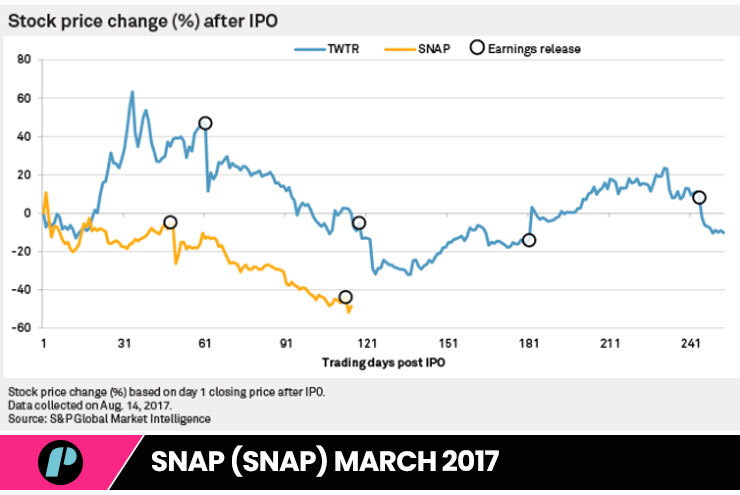
Introduction
In the first part of this article on IPO trading, we learned how high levels of interest, trade volume, and price volatility make IPOs very attractive for both traders and long-term investors alike. We have discovered what IPOs are and become a little more familiar with the process behind them. In this article, we’ll go a little deeper by taking a glance at 5 of the most popular IPO trading strategies while trying to distinguish some of the factors that can make or break an IPO’s chances of success.
5 of the most popular IPO Trading Strategies
Initial Public Offerings present a unique opportunity for traders and investors to capitalize on the growth potential of promising companies. However, it must be said that IPO trading can also be very challenging, as new stocks often exhibit significant volatility and unpredictable movements.
To increase the chances of success, traders must employ effective IPO trading strategies; here are 5 of the most common that have been proven able to yield positive returns.
Key Notes:
5 of the most common IPO trading strategies:
- First-Day Pop / Flipping.
- Buy & Hold.
- Breakout.
- Pullback.
- Sector Rotation.
The First-Day Pop Strategy / Flipping
The first-day pop strategy (or flipping) capitalizes on the initial surge in share price that commonly occurs when a stock debuts on the public market.
This strategy involves buying shares of the IPO at the opening bell and selling them within the first few minutes or hours. By capturing the initial momentum, investors can generate quick profits. However, this strategy is highly speculative and requires precise timing.
Buy & Hold Strategy
The long-term hold strategy is more suitable for investors with a longer investment horizon than for shorter-time traders.
This strategy involves buying shares of the IPO with a strong belief in the fundamental value of the underlying company and holding them for an extended period, expecting the stock price to appreciate over time as the company grows and establishes itself.
Breakout Strategy
The breakout strategy involves buying shares of an IPO once it breaks above a specific resistance level – typically identified through technical analysis.
By entering a trade after the stock breaks out, investors aim to capture the uptrend momentum and ride the trend as high as it goes.
This strategy requires a good understanding of technical analysis and effectively identifying potential resistance and breakout points.
Pullback Strategy
The pullback strategy is based on the assumption that IPOs often experience a pullback in price after the initial surge. This pullback provides an opportunity to buy shares at a lower price point than the opening price. Traders who employ this strategy typically wait for the stock to decline by a certain percentage before entering a trade.
The pullback strategy can be effective for capturing value in overvalued IPOs.
Sector Rotation Strategy
The sector rotation strategy involves identifying sectors experiencing strong growth and momentum. Traders then allocate their capital to open positions – according to one of the other four described strategies – on IPO stocks across the entire sector, betting on its overall positive trend. This strategy diversifies risk across different industries and can help investors capitalize on emerging market trends.
IPOs represent a milestone for companies embarking on the path to public equity markets. and the potential for great gains for investors and traders, but where some IPOs achieve soaring valuations and set the stage for future success, others stumble under adverse market conditions or internal challenges leaving traders and investors scratching their heads and questioning their decision.
Let’s explore case studies of both successful and unsuccessful IPOs to uncover the factors that influence their outcome.
The Good and the Bad IPOs of the past
Let’s first take a look at a couple of examples of successful IPOs and the factors that most likely have contributed to their success.
Airbnb (ABNB) December 2020
Airbnb’s launch into public ownership was a resounding success. From an IPO of $68, the price of each share increased 223% in the first two months alone, making it one of the most successful IPOs in history.

It’s not too hard to understand what factors were behind ABNB’s rise to the stars and the following are undoubtedly among them.
Strong demand. Investors saw Airbnb’s home-sharing platform as a disruptive force in the travel industry.
Impressive financials. Airbnb reported robust growth and profitability, attracting the attention of institutional investors.
Market timing. The IPO coincided with the pandemic-induced surge in demand for short-term rentals.
Effective marketing. Airbnb’s marketing campaign resonated with consumers and investors alike, creating buzz.
Spotify (SPOT) April 2018
Spotify’s IPO was another notable success that has taken its place in the financial history book. And here too, the reasons are quite easy to recognize.
Loyal user base. Spotify boasts a massive and engaged user base, which gave investors confidence in its future revenue potential.
Innovative technology. Spotify’s streaming platform and personalized music recommendations provided a differentiating factor in the market.
Global expansion. Spotify’s presence in multiple geographies increased its addressable market.
Subscription-based model. Spotify’s recurring revenue from paid subscriptions assured investors of stable cash flows.
Let’s now take a look at examples of stocks that had a lot less luck and success immediately after their IPOs and let’s see what factors have contributed to their failures. Let’s see what we can learn from that.
Blue Apron (APRN) June 2017
From an IPO of $10 per share, Blue Apron’s IPO kept declining to reach the price of just $1 a year and a half later.
Saying that Blue Apron’s stock has “underperformed expectations” is an understatement; the failure was catastrophic and it was due to several reasons:
Overpricing. The IPO pricing was seen as too high, given Blue Apron’s rapid cash burn and competitive market.
Operational challenges. Blue Apron struggled with rising costs and inefficiencies, raising concerns about its long-term profitability.
Weak financials. The company’s financial performance fell short of projections, casting doubt on its growth potential.
Consumer concerns. Consumers questioned the freshness and quality of Blue Apron’s meal kits.
Snap (SNAP) March 2017
Snap’s stock hasn’t performed any better than Blue Apron did. With a valuation of $24 billion at the IPO, Snap immediately started to lose ground to the point of reaching a market cap of just $8 billion only a couple of years later.

Snap’s IPO initially generated excitement and hysteria but hit a “tough-reality wall” not long after. Some of the factors that most contributed to the fall are:
Competition. Although it later managed to find its niche, at the beginning, Snap faced intense competition from Instagram and Facebook, which launched similar features.
Slowing user growth. The company’s user growth decelerated, raising concerns about its ability to sustain revenue growth.
Technical issues. The Snap app experienced technical outages and user complaints, dampening investor confidence.
Key Notes:
Before trading IPOs, pay the due attention to this important factors:
- The research on the company, its products and services, and its team.
- The market interest and demand for the new stock.
- The pricing and evaluation of the IPO against market expectations.
- The condition of both the market and the economy.
Key Considerations for IPO Trading Strategies
Do your pre-IPO research
Before trading an IPO, conduct thorough research on the company’s financials, industry trends, market demand, and management team. This will help you to better predict the first post-IPO market response.
Try to assess the interest for that stock
Evaluate the level of anticipation surrounding the IPO. High demand typically leads to a strong opening price and potential upside, while low demand can result in a flat or even declining price, possibly, suggesting a short.
Keep an eye on the pricing.
The offering price is crucial to understanding the potential profit margins. Look for companies with a conservative pricing strategy that leaves room for upside in the aftermarket.
Consider the Market Conditions
Consider the overall market conditions. Strong bull markets tend to benefit IPOs, while volatile or bearish markets can increase the risk of post-IPO declines. Naturally, macro factors such as interest rate and inflation levels must also play a part in your evaluation.
Conclusion
IPO trading can offer traders opportunities and profits when armed with a good strategy. By employing proven strategies such as the first-day pop, long-term hold, breakout, pullback, and sector rotation, traders can increase their chances of success.
Remember to conduct thorough due diligence, manage risk, and align your strategy with your investment goals and risk tolerance.
By implementing these five strategies and looking out for those important IPO aspects, knowledgeable traders can enhance even more their chances of successful IPO trading.
Remember, careful research, risk management, and a disciplined approach are crucial in IPO trading just as well as in any other form of trading.
Once again, I hope this helps.
If you liked this post make sure to share it!






